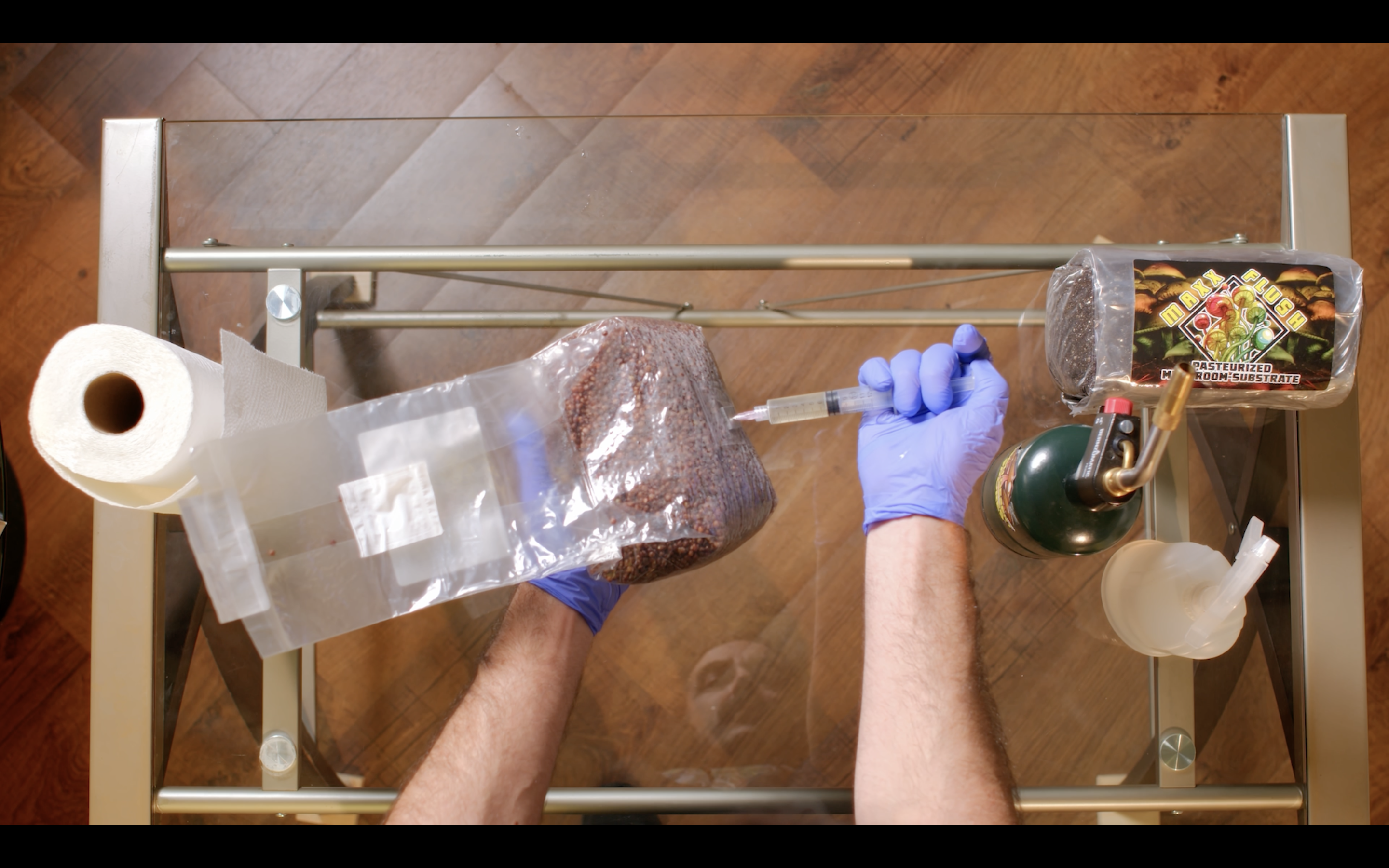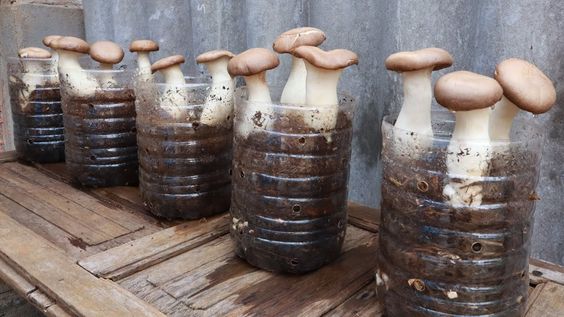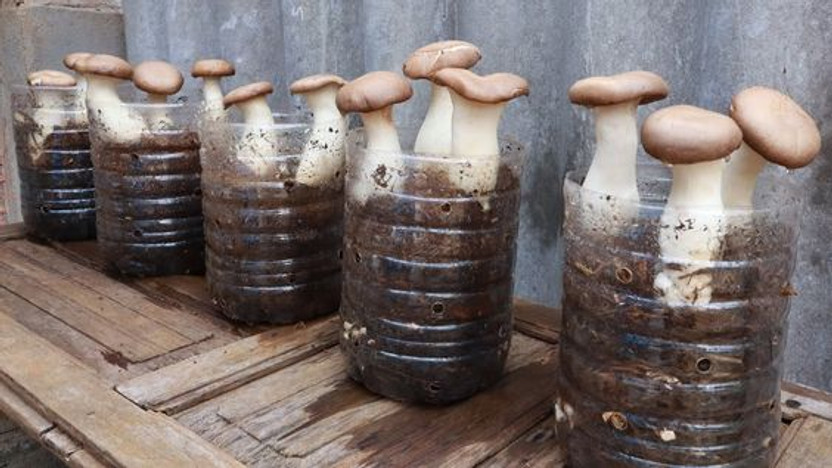Unleash the Secret to Growing Gourmet Mushrooms at Home - Start Your Mushroom Garden Today!
Posted by Jmaequiogue on Jun 12th 2024

Growing mushrooms at home is a fun and fulfilling hobby that lets you have fresh, delightful mushrooms right in your living room. This tutorial will provide you all the information you need to begin growing mushrooms on your own, regardless of your level of gardening experience.
Introduction to Mushroom Cultivation
Mushrooms are fungi, distinct from plants and animals, and they thrive on decomposing organic matter. Growing mushrooms at home can be a sustainable and enjoyable hobby, providing a fresh supply of mushrooms for culinary use, medicinal purposes, or simply for the joy of cultivation.
Choosing Your Mushroom Variety
Choosing the kind of mushroom you want to grow at home is the first stage in the process. Among the well-liked variations are:
1. Pleurotus organisms, or oyster mushrooms, are highly sought after for their simple cultivation and mild flavor. They are available in several hues, such as pink, gray, and white.
2. Lentinula edodes, or shiitake mushrooms, are prized in Asian cooking for their savory, deep flavor. Usually, they are grown on sawdust blocks or hardwood logs.
3. The most widely consumed type of mushrooms are button mushrooms (Agaricus bisporus), also referred to as white mushrooms. One can cultivate them with decomposed manure.
4. Hericium erinaceus, sometimes known as "Lion's Mane," is a great option for experienced growers because of its unusual appearance and possible health advantages.
Preparing the Growing Medium
When producing mushrooms, the growing media, also known as the substrate, is essential. Different substrates are needed for different species of mushrooms. Here are a few typical choices:
- Straw: Ideal for oyster mushrooms. It should be chopped into small pieces and pasteurized to eliminate competing organisms.
- Hardwood Logs: Suitable for shiitake and lion's mane mushrooms. Logs should be freshly cut and soaked in water before inoculation.
- Sawdust: Used for various mushrooms, including shiitake and lion's mane. It should be sterilized to ensure a clean growing environment.
- Composted Manure: Commonly used for button mushrooms. It requires proper composting to create a nutrient-rich medium.
- Coffee Grounds: An excellent recycling option for oyster mushrooms. They provide a nutrient-rich substrate.
Inoculating the Substrate
Inoculation is the process of introducing mushroom spores or mycelium into the substrate. This can be done in several ways:
- Spore Syringes: These contain mushroom spores suspended in a liquid. They are used to inoculate sterilized substrates like grain or sawdust.
- Spawn: Spawn is mycelium that has already colonized a substrate such as grain or sawdust. It is mixed with the prepared substrate to initiate colonization.
- Plug Spawn: Wooden dowels inoculated with mycelium, used primarily for inoculating logs.
Colonization and Incubation
After inoculation, the substrate needs to be incubated in a controlled environment to allow the mycelium to colonize it fully. Here are some key factors to consider:
- Temperature: Different mushrooms have specific temperature requirements. For example, oyster mushrooms prefer temperatures between 68-75°F (20-24°C), while shiitake mushrooms thrive at 55-60°F (13-16°C).
- Humidity: High humidity is essential for mycelium growth. Maintaining a humidity level of around 85-95% is ideal. You can achieve this by using a humidifier or misting the substrate regularly.
- Light: While mycelium doesn't require light to grow, exposure to indirect light can trigger the formation of mushroom fruiting bodies.
- Ventilation: Proper air exchange is necessary to prevent the buildup of carbon dioxide, which can inhibit mushroom growth. Ensure good airflow in the incubation area.
Fruiting and Harvesting
Once the mycelium has fully colonized the substrate, it is time to initiate the fruiting process. This involves creating the right conditions for mushrooms to develop.
- Temperature and Humidity: Adjust the temperature and humidity according to the specific requirements of the mushroom variety. For example, oyster mushrooms fruit at 60-70°F (15-21°C) with high humidity.
- Light: Provide indirect light to stimulate mushroom formation. A few hours of light each day is sufficient.
- Fresh Air: Ensure good ventilation to promote healthy mushroom growth. Too much carbon dioxide can lead to deformed mushrooms.
- Watering: Mist the substrate regularly to maintain high humidity. Avoid over-watering, as it can lead to mold growth.
Mushrooms typically appear within a few weeks after initiating the fruiting conditions. Harvest them by gently twisting and pulling the base of the mushroom. Avoid cutting them, as this can leave behind a stub that may rot and attract contaminants.
Common Challenges and Troubleshooting
Growing mushrooms at home can come with some challenges. Here are common issues and how to address them:
- Contamination: Contaminants like mold and bacteria can outcompete mushroom mycelium. Ensure proper sterilization of the substrate and maintain a clean environment.
- Slow Growth: If mycelium growth is slow, check temperature, humidity, and ventilation. Adjusting these factors can speed up colonization.
- No Fruiting: If mushrooms fail to fruit, ensure that the substrate is fully colonized and that fruiting conditions are optimal.
- Deformed Mushrooms: Poor air exchange or low humidity can lead to deformed mushrooms. Improve ventilation and maintain consistent humidity levels.

Benefits of Growing Mushrooms at Home
- Freshness: Home-grown mushrooms are fresher and often more flavorful than store-bought varieties.
- Sustainability: Growing your own mushrooms reduces the need for packaging and transportation, making it an eco-friendly choice.
- Health: Mushrooms are rich in nutrients and have various health benefits. Growing them at home ensures you have access to organic, pesticide-free produce.
- Educational: Mushroom cultivation is a fascinating hobby that offers a deep understanding of fungal biology and ecology.
- Economic: Growing mushrooms at home can save money, especially if you frequently use mushrooms in your cooking.
Conclusion
The practice of cultivating mushroom at home is rewarding and enjoyable and has several advantages. You can successfully develop your own mushrooms by choosing the perfect kind, preparing the right substrate, and keeping the ideal growing conditions. Mushroom gardening is an excellent method to accomplish a variety of goals, including expanding your knowledge of sustainable techniques, improving your culinary experiences, or just having fun with a new pastime. Happy growing!
